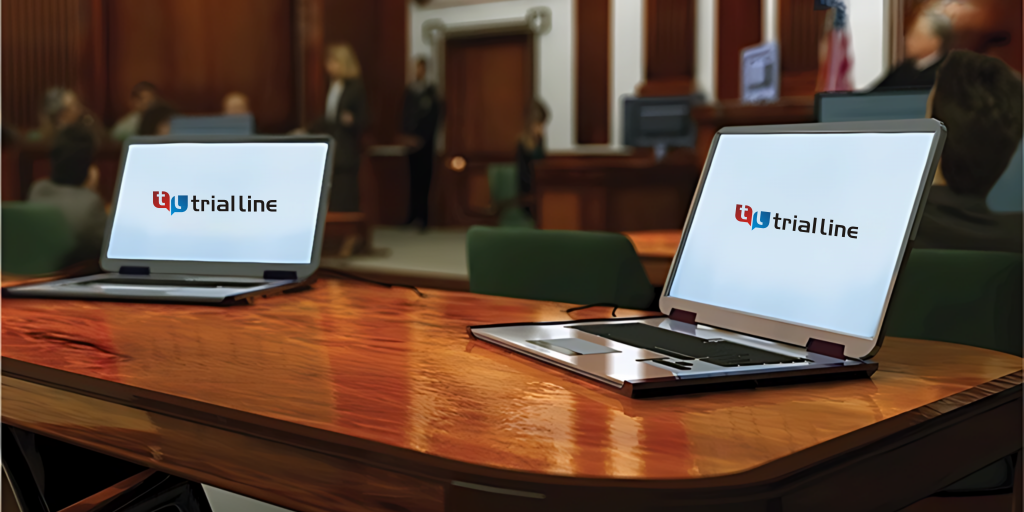How Trial Presentations Enhance Your Disagreement and Encourage Jurors
Trial presentations function as a critical system for boosting lawful arguments and convincing jurors. By integrating visual aids, narrative structures, and psychological interaction, attorneys can create a compelling situation that resonates on multiple levels. The strategic use visuals not just makes clear complicated info but also records jurors' interest much more efficiently than words alone. The art of narration plays an equally critical role in changing factual evidence right into an engaging story, shaping jurors' assumptions. Recognizing these aspects can significantly influence test outcomes, elevating the concern of how each part adds to this intricate dynamic.

Significance of Visual Help
Visual help play a critical duty in enhancing the performance of test presentations, as they can significantly boost audience involvement and retention of info. In the context of a trial, where jurors are entrusted with processing facility info, visual help serve to streamline and clarify key points. Charts, charts, and images can share information and concepts that might otherwise bewilder or puzzle jurors, permitting a more simple understanding of the evidence offered.
Additionally, visual aids help in keeping juror attention throughout the process. By breaking the uniformity of verbal testament, these tools can stress vital arguments, making them a lot more memorable. Efficient aesthetic aids can additionally evoke psychological reactions, which can be crucial in convincing jurors to straighten with the speaker's narrative.

Crafting Engaging Narratives
A compelling story is important in test presentations, as it works as the foundation of efficient persuasion. It allows lawyers to weave with each other facts, proof, and emotional aspects into a coherent tale that resonates with jurors. This narrative framework makes it possible for jurors to comprehend the intricacies of the instance while directing them via the attorney's argument.
To craft an engaging narrative, lawyers ought to focus on quality and coherence. This entails establishing a clear lead character-- typically the customer-- and outlining their trip with the events concerned. Offering the truths in a logical sequence improves understanding and preserves involvement. Furthermore, the usage of vibrant summaries can produce psychological pictures that help jurors envision the events, making the story much more unforgettable.
Furthermore, integrating key themes throughout the presentation strengthens the core message and aids in retention - trial presentations. The narrative ought to not only convey information but additionally evoke a feeling of justice, highlighting the stakes included. Eventually, a well-constructed story promotes a connection between the jurors and the case, placing the attorney's argument as both reputable and engaging, thereby increasing the chance of a positive decision

Involving the Jury Psychologically
Efficient jury interaction hinges on the lawyer's ability to Find Out More attach with jurors on an emotional degree. This link can significantly influence jurors' perceptions and their best decision-making. Using sob stories permits attorneys to humanize the instance, transforming abstract lawful ideas right into relatable experiences. By providing real-life tales or testimonies, attorneys can stimulate empathy and concern, promoting a much deeper understanding of the concerns at stake.
Visual aids, such as photographs or videos, can even more boost emotional engagement, providing jurors with vivid depictions of the instance's human elements. Crafting a story that highlights the struggles and triumphs of the people entailed makes sure that jurors see beyond the legal debates and recognize the human effects of their choices.
A lawyer's enthusiastic shipment can reverberate with jurors, reinforcing their emotional investment in the instance. It's important to balance psychological appeals with factual evidence, making sure that jurors really feel compelled to act while remaining based in the fact.
Structuring Your Discussion

The body of the presentation need to be rationally segmented into vital factors, each supported by compelling proof. It is valuable to utilize storytelling strategies to weave realities right into a story that jurors can quickly adhere to. Aesthetic aids, such as charts and video clips, can improve comprehension and involvement, assisting to highlight vital pieces of proof.
Real-World Study
Examining real-world instance researches offers very useful insights into the art of trial presentations and persuasion. The protection group effectively employed a technique that integrated top-level expert testimonies with multimedia presentations, which mesmerized jurors and inevitably affected their choice.
Another noteworthy instance is the "McDonald's Coffee Instance," where the complainant's lawyers utilized visuals images of the injuries endured by Stella Liebeck. trial presentations. This raw aesthetic evidence played a crucial role in conveying the intensity of her burns, leading to a significant court honor. Such instances see it here demonstrate that impactful test presentations typically rest on the reliable assimilation of visuals and storytelling to evoke psychological responses from jurors
Moreover, the "Casey Anthony Trial" highlighted the significance of narrative comprehensibility and integrity. The prosecution's failure to develop an engaging timeline lessened their convincing power, emphasizing the need of a well-structured presentation. Examining these instances discloses that effective trial discussions require tactical preparation, psychological involvement, and the ability to reverberate with jurors' worths and ideas.
Final Thought
Test discussions dramatically boost disagreements and persuade jurors via the strategic use of visual aids, compelling stories, and emotional involvement. A well-structured discussion equilibriums emotional appeals with valid proof, eventually resonating with jurors' worths.
Comments on “Winning cases often depends on well-prepared trial presentations designed for impact.”